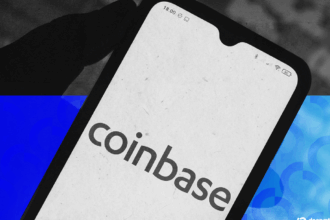DeFi Lending Poised to Survive JPMorgan Crypto Lending Gamble
JPMorgan Chase’s potential foray into crypto-backed lending intensifies competition in the market, according to reports, but experts argue decentralized finance (DeFi) platforms offer key advantages that position them well against major traditional finance (TradFi) players.
TradFi Eyeing Entry
Reports indicate JPMorgan, the US’s largest bank, is exploring the launch of lending services collateralized by crypto assets like Bitcoin (BTC) and Ether (ETH), according to a Financial Times story. An unnamed source suggested the product, still in early stages, could arrive by 2026.
DeFi’s Competitive Edge
This move puts pressure on DeFi lending protocols operating on blockchains like Ethereum and Polygon, but proponents highlight inherent strengths. Sergey Kunz, co-founder of 1inch Network, emphasized user experience, broader collateral acceptance, and fee mechanisms driven by the market as DeFi’s main pluses against TradFi.
“DeFi lending platforms provide a simpler user experience,” Kunz stated. “They support a wider range of collateral options, and importantly, their liquidation processes occur later than those usually seen in traditional finance.” He noted TradFi often charges higher fees, while fee structures in DeFi can be market-driven.
Xapo Bank head of investments, Gadi Chait, agrees DeFi and TradFi target different customer bases but rates could be a competitive factor. “While TradFi giants may offer crypto-collateralized loans, crypto lending rates in DeFi typically have lower fees which offset any differences from regulated alternatives,” Chait added.
The scope of the crypto lending market, Chait argues, offers significant growth potential beyond even JPMorgan’s considerable account base, “The crypto lending space is vast. The market is too big for one player, especially considering the grand size of JPMorgan. Regulation and legal frameworks will prevent them from dominating the market entirely.”
Permissionless Access
According to Zignaly’s Abdul Rafay Gadit, the permissionless nature of DeFi platforms remains a core strength. DeFi allows participation based solely on an internet connection and a wallet, bypassing the extensive verification and approval processes typical of traditional financial institutions.
Gadit advised DeFi not to focus solely on competing via interest rates, pointing instead to its unique attributes like developer composability, censorship resistance, and global accessibility. These characteristics, he stressed, are difficult for TradFi to replicate.
XBTO Senior Trader George Mandres sees DeFi carving out an advantage in accessing niche or “long-tail” crypto assets. “DeFi probably needs to create two tracks […]; one for institutions, one for Millennials,” Mandres argued, suggesting DeFi might better serve retail borrowers.
Institutional Impact
Platform creator Ibanera’s Michael Carbonara views JPMorgan’s potential involvement positively, seeing it as further validation and maturity for the digital asset sector and a signal of greater institutional participation in Web3.
However, Rosenblatt Law’s crypto specialist Tom Spiller voices skepticism, arguing the concept isn’t novel and JPMorgan’s slow pace suggests they are likely following a herd mentality, potentially repeating errors made during previous financial cycles.
In summary, while JPMorgan’s potential move represents a significant development and institutional entry could bring benefits, experts largely believe DeFi’s unique advantages ensure its continued relevance and competitiveness in the evolving crypto lending landscape.










